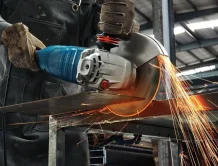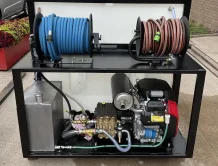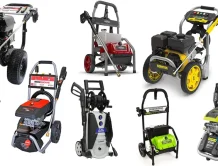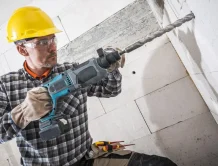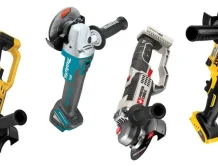If you take a closer look at the residential projects around you, you will realize that various tools are needed for the construction or even demolition of different residential and non-residential buildings. A demolition hammer is one of these tools commonly used for the demolition of various parts of a building. This tool is designed to break any hard and solid object by delivering rapid and heavy blows. Different types of demolition hammers are suitable for use at specific times and locations. It is important that your demolition hammer aligns with the type of project and environmental conditions. To make the right choice for this product, it is necessary to have a good understanding of its various types.
In general, the main criterion for different types of demolition hammers is their power source. This factor, in addition to determining the power and performance of the structure, also determines general aspects such as the working time and the lifespan of the device. Electric, cordless, pneumatic, hydraulic, and gasoline-powered demolition hammers are the main categories in this field. Below, we explain each of them.
Electric Demolition Hammer
Cordless Demolition Hammer
Pneumatic Demolition Hammer
Hydraulic Demolition Hammer
Gasoline Demolition Hammer
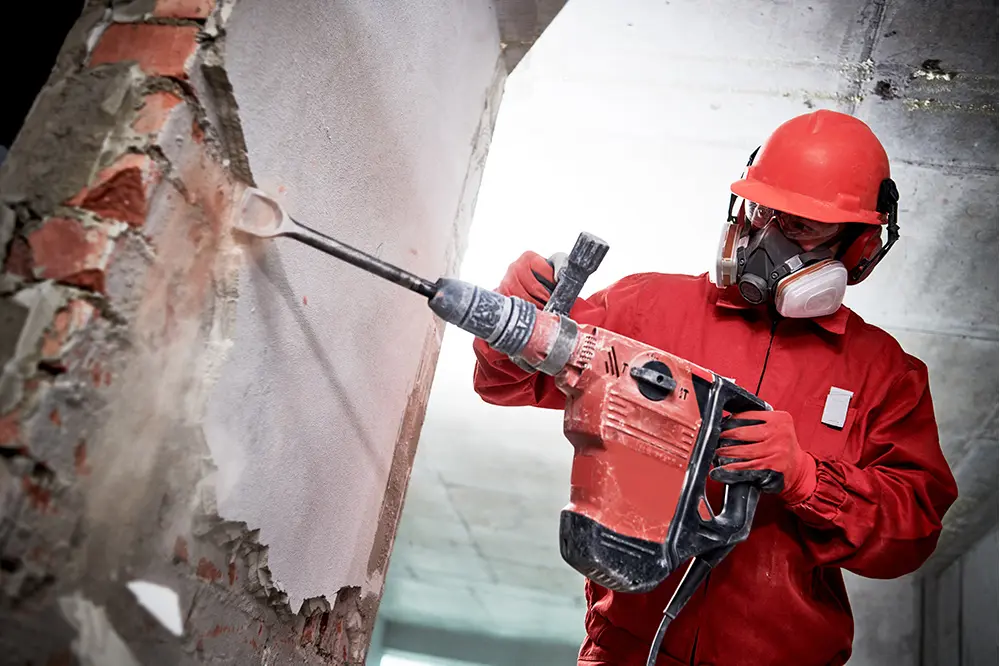
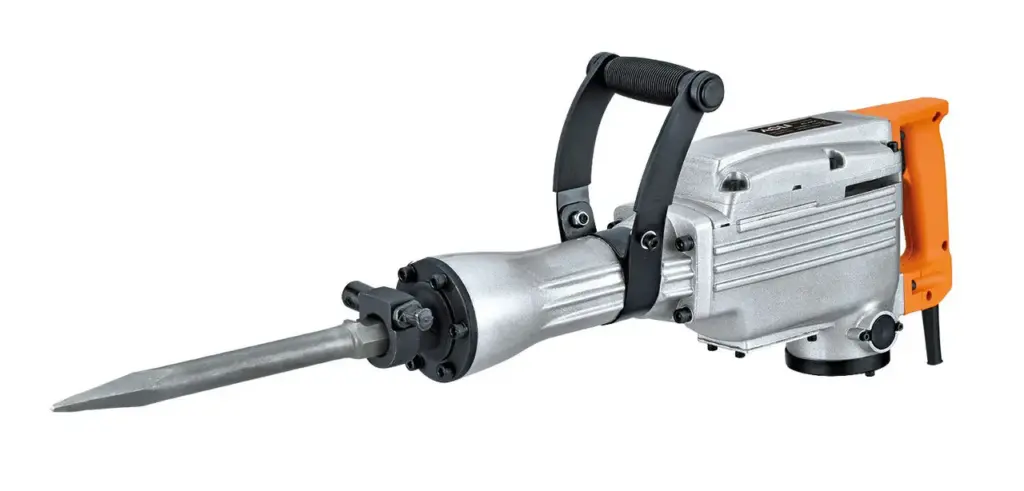
Electric Demolition Hammer
As the name suggests, an electric demolition hammer obtains its energy from the city’s electrical power source. Therefore, you need a cable and electric current to operate it. These devices are characterized by high precision, speed, and power. An operator can use the tool continuously as long as the electrical current is active.
However, there is a fundamental drawback in this category. The electric demolition hammer is practically useless in places where access to electrical power is unavailable. Additionally, the presence of extra cables can create physical limitations for the operator in certain conditions. Moreover, if the cable experiences impact or entanglement, it can lead to device malfunction. It’s worth noting that the electric demolition hammer’s cables should not be exposed to moisture or extremely high temperatures, as it may cause electrical connections in them.
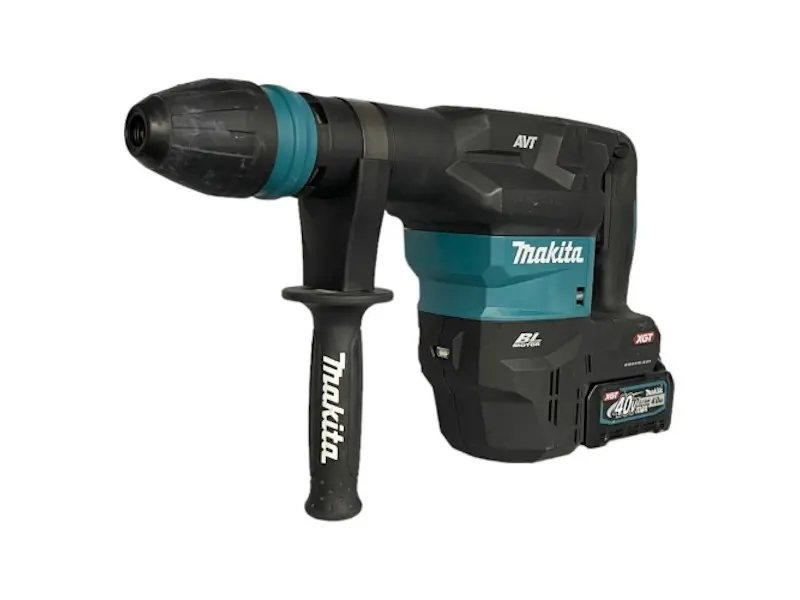
Cordless Demolition Hammer
The cordless demolition hammer is a compact and portable tool with considerable power and precision despite its limited size. This type of hammer is equipped with two powerful batteries that supply the required energy. Although these batteries can deliver the desired power to the device, the working duration is limited. In other words, the cordless demolition hammer can only operate continuously for a few hours. Once the battery charge is depleted, the device shuts off. The limited operational time is one of its drawbacks.
On the positive side, the cordless hammer is easily transportable and can be moved around effortlessly. Additionally, workers can perform demolition operations in locations without access to electricity. Considering its power source, there are no additional cables involved, allowing the operator greater freedom of movement.
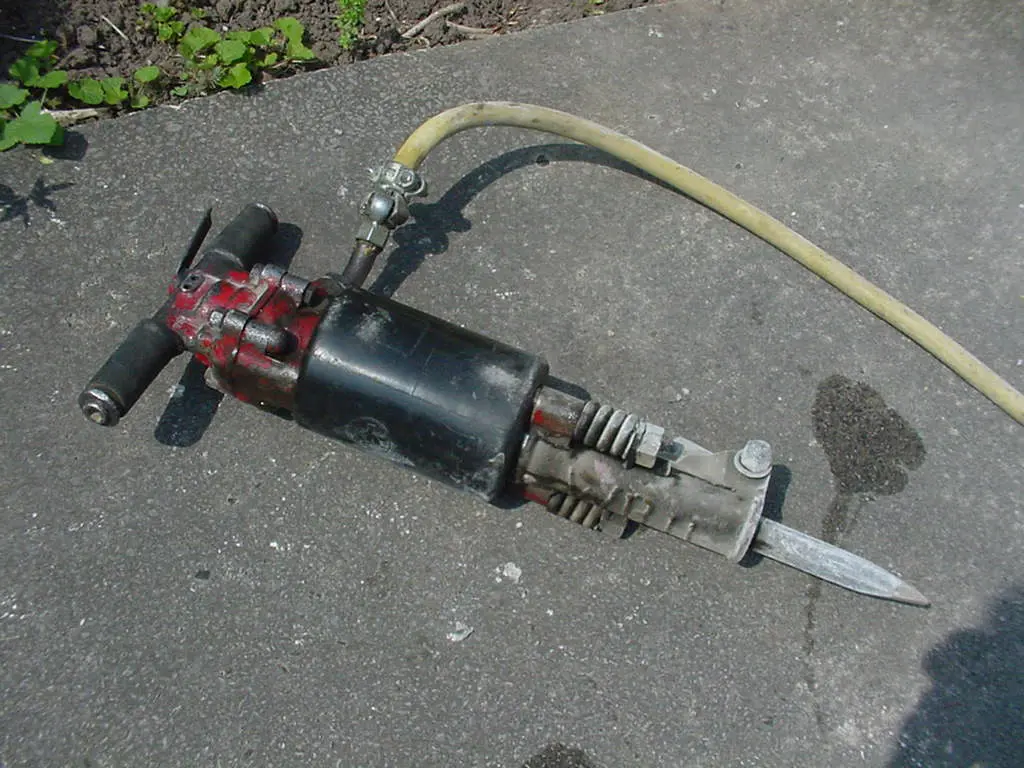
Pneumatic Demolition Hammer
The power source for a pneumatic demolition hammer is slightly different. This type of hammer derives its power from compressed air pumped into its internal components. This compressed air is produced through several pump devices connected to the structure. Another name for a pneumatic demolition hammer is an air-powered hammer.
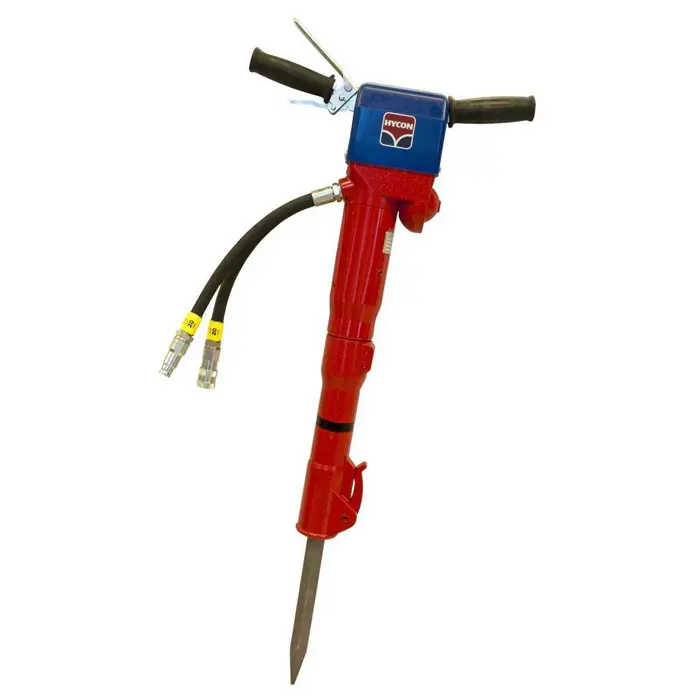
Hydraulic Demolition Hammer
The hydraulic demolition hammer also shoulders the task of demolishing various structures, but it does so on a broader scale. This type of hammer is very heavy and large, requiring installation on loaders and mechanical excavators for control. It is used for operations like mountain demolition, tunneling, roof removal, etc. Since this demolition tool lacks an electrical circuit, it can also be utilized in places like mines.
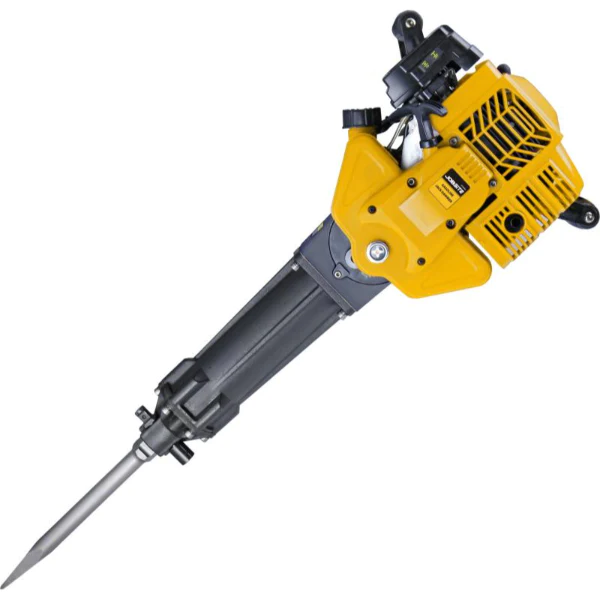
Gasoline Demolition Hammer
The Gasoline Demolition Hammer is a powerful tool for demolition work, featuring a gasoline engine for mobility and versatility. It doesn’t rely on electricity, making it suitable for outdoor or remote locations. With robust power, it’s effective for heavy-duty tasks, offering independence from power grids and enhanced durability. Users should be mindful of exhaust emissions and noise, and regular maintenance is required for optimal performance. Choose this tool based on project needs and working conditions.



